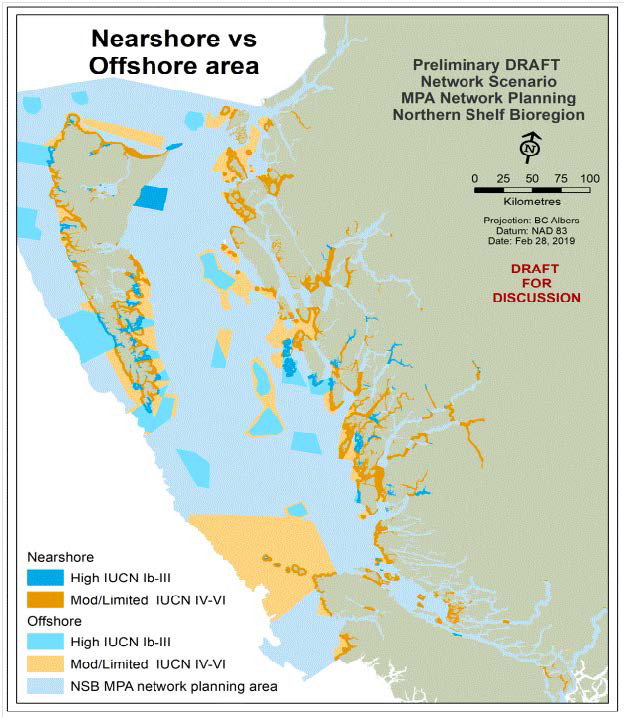The geoduck fishery in British Columbia, Canada, is potentially facing the loss of up to half of its yearly catch through proposed marine protected areas (MPA) that would close access to fishing grounds.
The MPA Network B.C. Northern Shelf Initiative Network Action Plan is proposing closures in a number of areas throughout the region, covering various areas of shoreline, kelp forest, and open ocean with different types of conservation designations. According to the Underwater Harvesters Association – which represents geoduck fishers in B.C. – a number of the areas in the network overlap with historic fishing grounds and could potentially jeopardize the viability of the fishery, as well as others like it in the province.
“It will be disastrous for commercial fisheries in B.C. if it goes through as is,” Underwater Harvesters Association (UHA) Executive Director Grant Dovey told SeafoodSource during Seafood Expo North America (SENA) – which ran from 10 to 12 March in Boston, Massachusetts, U.S.A.
Dovey said a large portion of the geoduck fishery is active in several of the spots that Canada’s Department of Fisheries and Oceans (DFO) is planning to deem off limits. He also highlighted that these closures would affect a region that has already been overemphasized in Canada’s efforts to achieve its “30-by-30” goals.
The 30-by-30 metric is a widespread initiative that a number of countries, including the U.S., have committed to, with the goal of placing 30 percent of lands and oceans under conservation by 2030.
“According to DFO numbers, we’re already at 34 percent protected in B.C., and that’s before the Northern Shelf Bioregion [NSB],” Dovey said. "Atlantic Canada is about 10 to 15 percent and the Arctic is at 10 to 15 percent as well, so B.C. is paying a disproportionate price.”
Throughout the process of determining where the DFO will establish MPAs in the region, geoduck harvesters were asked for feedback, Dovey said. So far, that feedback seems like it has largely been ignored.
“They came out with what was called Scenario 1 to the NSB in 2019 and said, ‘You’ve got a couple weeks to give us some feedback.' We said, ‘There’s no way we can do that; we need more time, but we as an industry will get together and facilitate feedback from 27 different fisheries in the NSB and present it,'” Dovey said. “We hit the ground running, and we did that. Over four months or so, we had 35 meetings up and down the coast.

The UHA met with over 700 different fishing representatives, fishermen, processors, fish-processing plant owners, and more. Through the meetings and the work, the UHA and fishing industry stakeholders created a plan that would allow it to meet the DFO’s list of 275 ecological conservation priorities while also reducing impacts to the commercial fisheries, Dovey said.
The UHA and fishing advocates submitted the advice, but the DFO then came out with its Scenario 2 MPA proposal, Dovey said.
“Scenario 2 did not incorporate our commercial policy advice, and they didn’t even respond to the advice to tell us why it wasn’t incorporated,” Dovey said.
At that point, the fishery was granted a reprieve, as the government determined it didn’t have the processes or resources in place to manage a conservation network on the scale proposed, he said.
Then, in February 2023, the DFO endorsed the network but hasn’t answered concerns. Instead, it has simply removed management measures to simplify things, Dovey explained.
“So now, we’re four-and-a-half years into it, and they say it’s going to be implemented by 2025; they still don’t have a process to deal with our advice on the management,” Dovey said.
At this point, the UHA has “no confidence” that the MPAs will be implemented with any considerations for the fisheries, and Dovey said the financial impact could result in the loss of more than CAD 130 million (USD 96 million, EUR 88 million) on fisheries in the region.
One of the parts of the ordeal that stings is the fishery’s low impact ...








